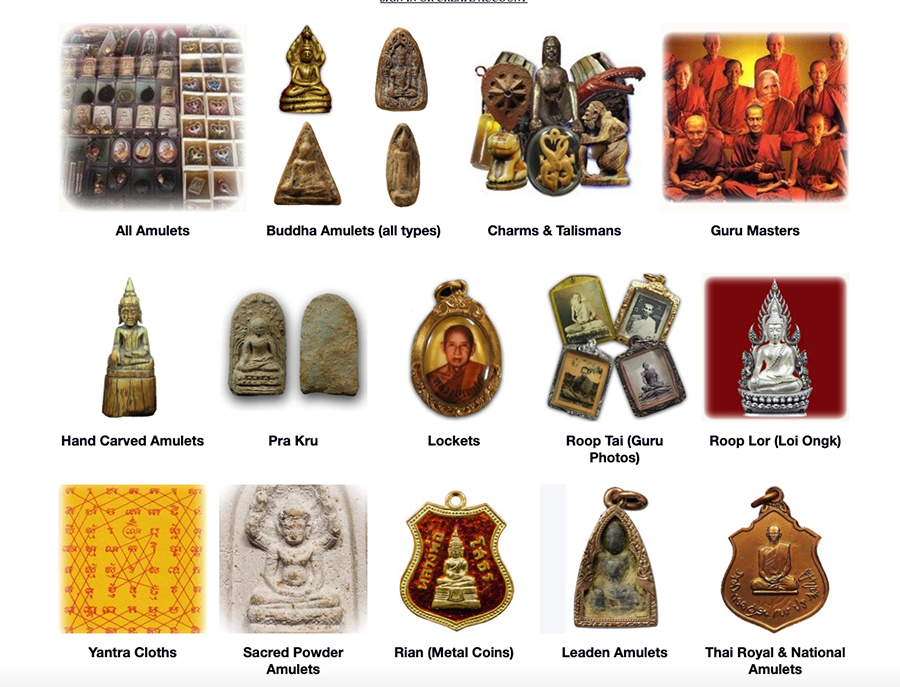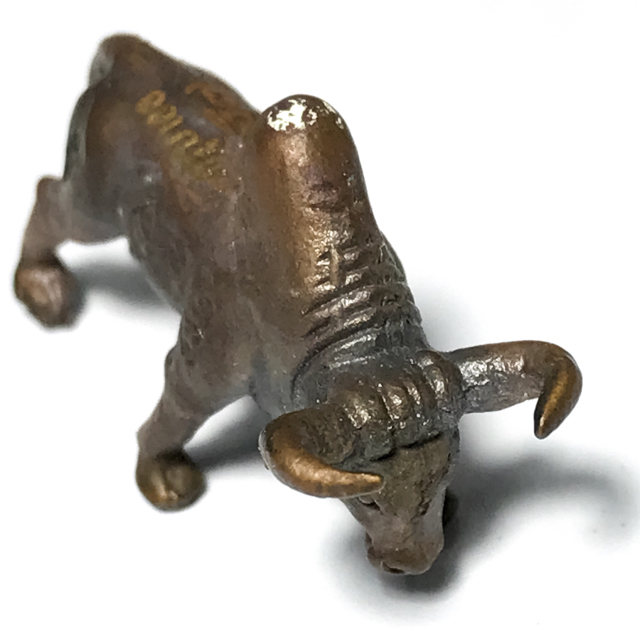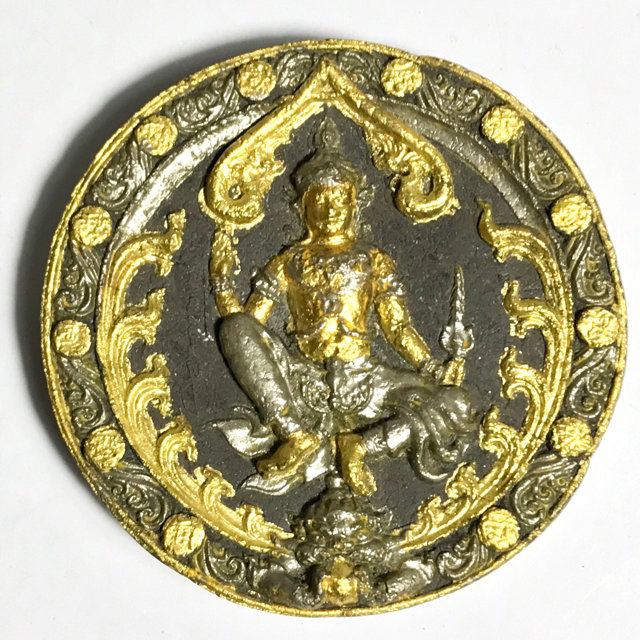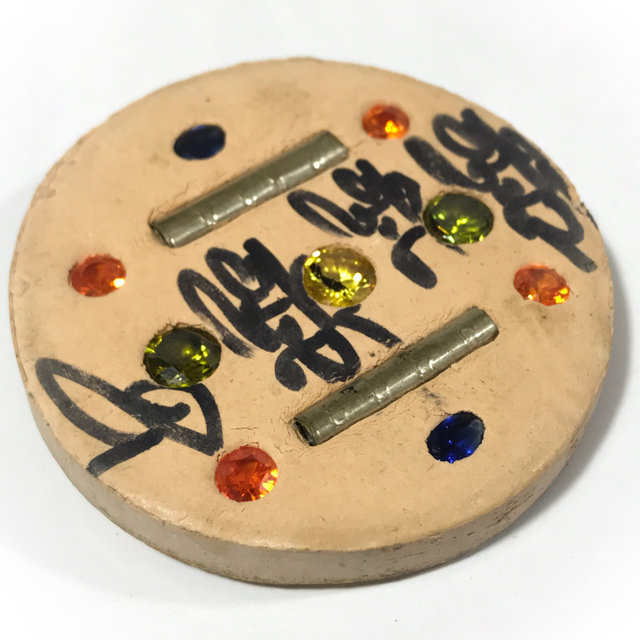Nine Essential-To-Know Thai Amulets – A Glimpse into Sacred Thai Traditions
In the heart of Thailand’s rich cultural heritage, lies a belief deeply rooted in its history and spiritual beliefs and practices: the use of ‘Phra Kruang’ (amulets, talismans and charms). These small, intricately crafted amulets and charms have been an integral part of Thai culture for centuries. The number nine holds particular significance in Thai Buddhism, symbolizing completeness and fulfillment. In honor of this sacred number, we explore nine essential Thai amulets that have captured the hearts and beliefs of both Thais and foreigners alike.
1. Buddha Amulet (Phra Somdej)
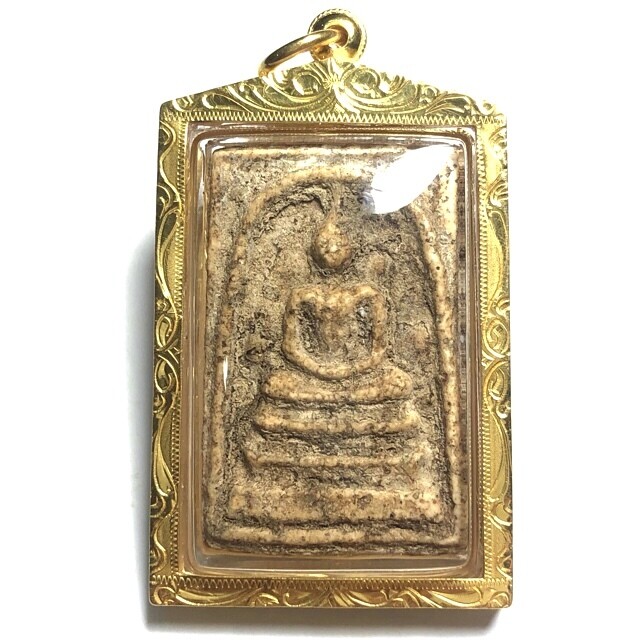
Pra Somdej Buddha Amulet
Buddha amulets, known as “Phra Somdej” in Thai, are miniature replicas of the Lord Buddha or other revered figures such as monks, maestros, Bodhisattvas, and deities. These amulets are believed to offer protection, invincibility, and good fortune to their wearers. Warriors once carried them into battle, while today, you’ll often find them adorning the necks of people as lucky charms. The trade in amulets can be highly lucrative, with rare specimens fetching staggering prices. The most famous and revered Phra Somdej amulet of all time, is the Phra Somdej Wat Rakang Kositaram of Somdej Pra Puttajarn (Dto) Prohmrangsri. There are numerous Pim Song (shapes and sizes) of Pra Somdej, but the five officially recognized Pim of Pra Somdej amulets—Pim Pra Pratan, Pim Chedi, Pim Brok Po, Pim Gaes Bua Dtum, and Pim Thaan Saem—are the ones which are officially recognized and listed by the “wongarn Pra Krueang” as Somdej Wat Rakang amulets.
2. Kuman Thong (The Golden Child)
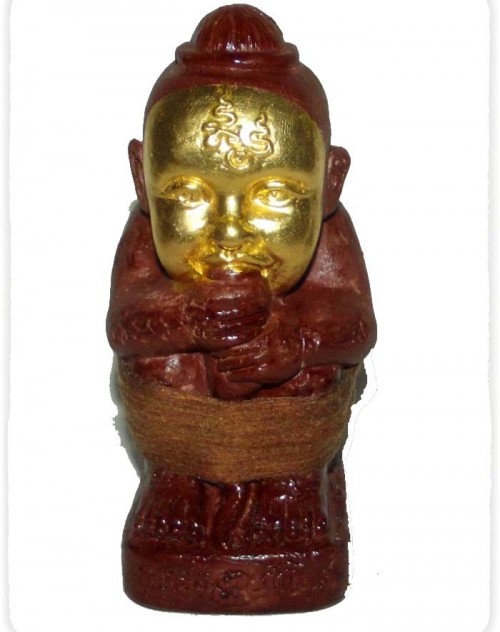
Kumarn Tong Run Sud Taay 27 Gote Large Size Bucha Statue Luang Por Goy
Kuman Thong, the spirit of a stillborn baby boy, is believed to bring protection and prosperity when conjured by a shaman into a boy-shaped statue. Owners must care for Kuman Thong as if it were a real child, and in return, it safeguards them from harm and keeps watch for enemies. Kuman Thong, which translates to “Golden Boy” in Thai, is typically represented as a small statue or effigy. These effigies are often made and blessed by Buddhist monks, even though the practice is more closely associated with Thai black magic or occultism.
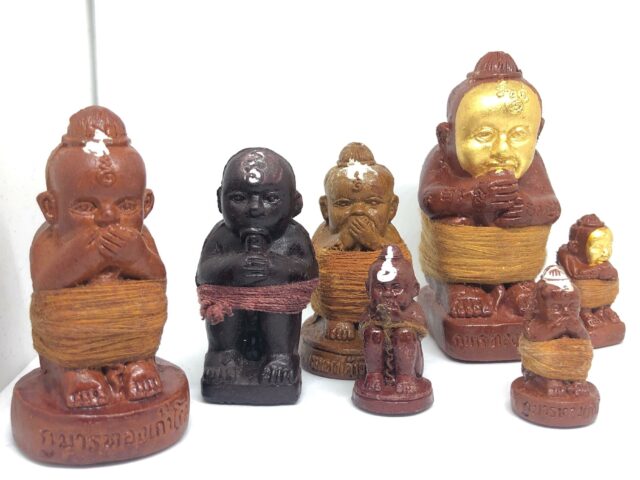
Kumarn Tong Statues
Origins of Kuman Thong
The authentic Kuman Thong has its roots in necromancy. It involves obtaining desiccated fetuses of children who died in their mothers’ wombs. Witch doctors or practitioners of black magic were said to have the power to invoke these stillborn babies, adopt them as their own children, and utilize them for various purposes, including providing protection and generating wealth.
Creating a Kuman Thong
In traditional practices, creating a Kuman Thong involved a specific set of rituals:
- Surgical Removal: The unborn fetus was surgically removed from the womb of its mother.
- Cemetery Ritual: The body of the child was then taken to a cemetery, where a proper ceremonial ritual was conducted to invoke a Kuman Thong.
- Roasting: The body was roasted until it became dry, all the while the witch doctor chanted incantations of magical script.
- Lacquering and Gilding: Once the roasting was completed, the dry-roasted Kuman was painted with Ya Lak, a type of lacquer used to cover amulets and Takrut with gold leaf. This process gave the effigy the name “Kuman Thong” or “Golden Little Boy.”
In some cases, Kuman effigies were soaked in Nam Man Phrai, an oil extracted by burning a candle close to the chin of a deceased child or a person who died in violent circumstances. However, this practice is now illegal if it involves the use of fat from human babies for consecrating oil.
3. Nang Kwak (Goddess of Fortune)
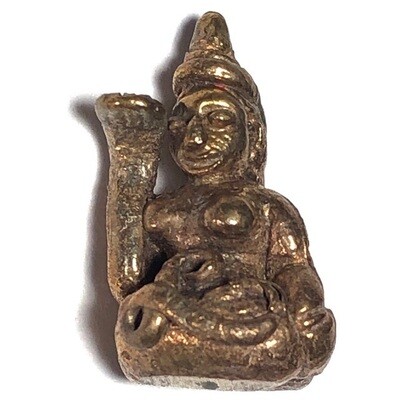
Nangkwak Thai Amulet
Nang Kwak, the goddess of fortune, is often depicted as a woman in traditional Thai attire, beckoning with her hand. Nang Kwak is believed to attract wealth and customers, making her a common sight in shops and businesses.
4. Palad Khik
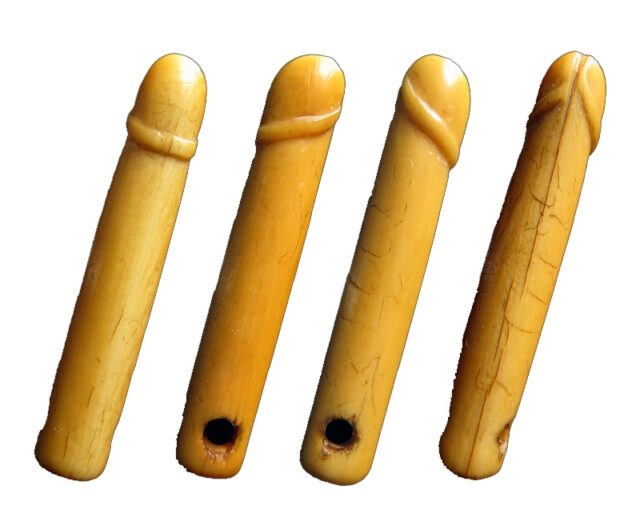
Palad Khik Thai amulet
Palad Khik, typically made of wood, replicates an adult’s penis and is not used for erotic purposes. It is rooted in Hindu belief and is believed to offer protection from harm, even to small children. When hung at a child’s waist, it was thought to trick malevolent spirits into seeing the child as an adult. Ancient animist ideas that existed in Thailand before Buddhism emerged can be associated to the Palad Khik amulet’s beginnings. These beliefs were founded on the veneration of spirits and fertility gods that brought forth fertility, protection, and wealth. The amulet’s phallic form reflected these ideas and was believed to grant favors on the person who wore it. Buddhism absorbed and incorporated indigenous beliefs and customs when it started to grow and establish itself in Thailand. With its pre-existing cultural importance, the Palad Khik amulet proved able to be included within the Buddhist framework. As it merged with Buddhist rites and beliefs, it preserved its fertility, protection, and prosperity connotations.
5. Yant (Yantra)
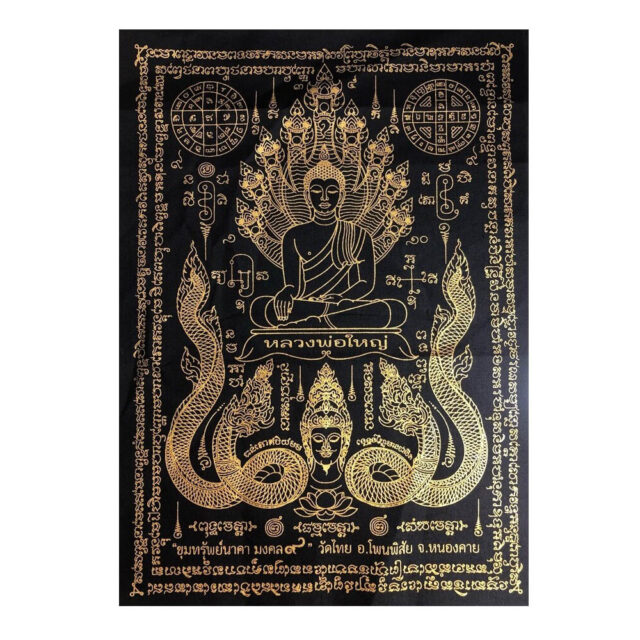
Pha Yant Luang Por Yai Sacred Buddhist Yantra Cloth
Yantra are sacred geometric patterns, and are either written, tattooed, or engraved on various surfaces. These patterns are influenced by Hinduism and can be classified into four groups: square, triangular, circular, and image yantras. The text within the yant, is composed of ancient Khmer characters and holds deep significance.
6. Khwai Tanu (Arrow Buffalo)
Khwai Tanu, or the guardian buffalo, is a puppet made from various materials and consecrated through rituals. It is believed to protect against ghosts, thieves, and even harm one’s enemies in some regions.
7. Jatukham Ramthep
- Taep Jatukam Ramataep Yod Nam Tip 2550 BE Nuea Dam Bad Tong Kroo Ba Krissana Only 50 Amulets Ever Made
- Rear Face of Taep Jatukam Ramataep Yod Nam Tip 2550 BE Nuea Dam Bad Tong Kroo Ba Krissana
Jatukham Ramthep, comprising Thao Khattukham and Thao Ramthep, guards Wat Phra Mahathat Woramahawihan Temple in Nakhon Si Thammarat. These deities, rooted in Brahmanism, were once supreme gods and later renamed Thao Jatukham.
8. Sai Dak Sap (Bamboo Fish Trap of Fortune)
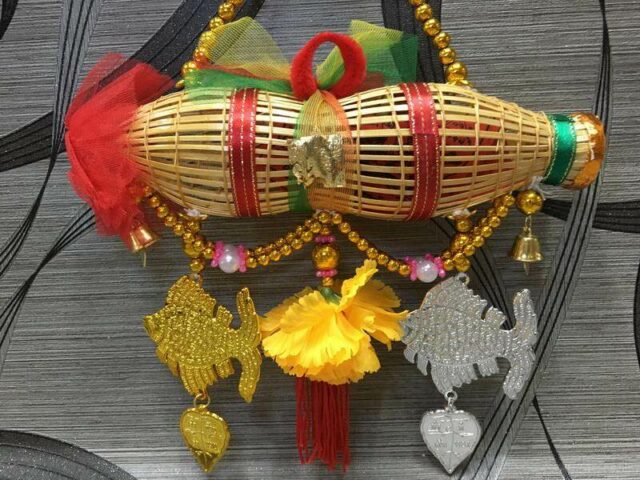
The Sai Dak Sap, a traditional Thai fish trap, is believed to trap not just fish but also money and good fortune. Hanging one outside a shop or house is thought to bring prosperity and happiness. The ‘Sai’, is an Olden Days invention of Thai Farmers, who in the months after the harvest, when nothing was left to do until the sowing season, would use the spare time to find other ways to find food or things to sell.
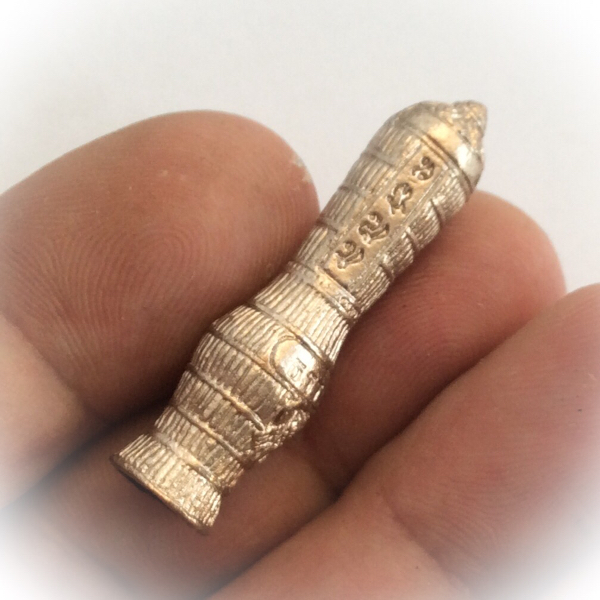
Sai Dood Sap – Sacred Trawling Basket to Attract Riches & Treasures – Nuea Albaca Gammagarn version – Traimas 2553 BE Edition – Luang Phu Bpun Tammabalo
They would scour the surrounding areas, the marshes, streams rivers and ponds, for fish. The Sai was a basket made with two special openings in it, where fish could swim into the basket, but were not able to swim out aqain, effectively imprisoning them until enough fish were inside the basket to take to market, or to go home and eat, or both. The allusion is obvious, that the Sai will allow wealth to enter into your possession, but not allow it to slip out through your fingers anymore, and keep it safe, and on the increase. The Sai Dood Sap is an inimitable and refreshingly different wealth charm that stands out from other amulets for its unusualness.
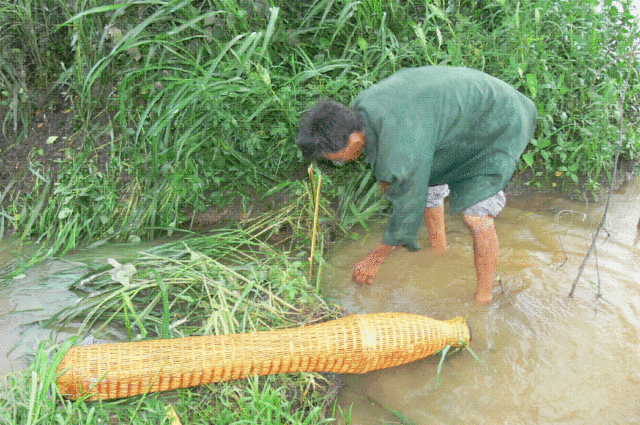
Local Thai Fisherman using the Sai Dak Sap Fish Trap Basket
The Sai itself as a traditional fish hunting trap, is also these days relatively unknown to the City Dwelling People, for indeed, only the inland country folk need to find fish in this way, and modern Thais are becoming ever less dependent on autonomous food seeking (hunter-gathering). This is of course, because in Municipal areas, supermarkets and large fresh markets have become cheaper in price and it is no longer worth it to use the traditional method for most people, unless their profession is fishing.
9. Mother’s Clothing
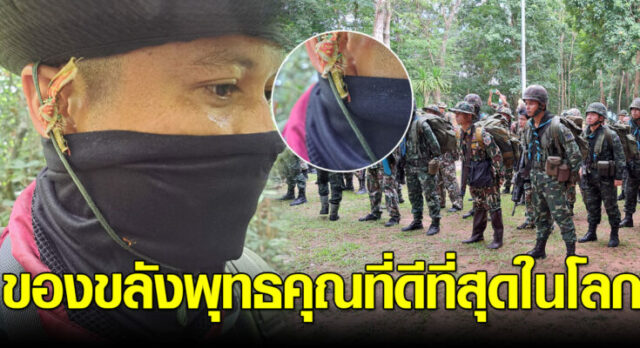
Puttakun Dee Tee Sid Nai Loke (Best Buddha Blessing in the4 World); Mom’s ‘Pha Thung’ (skirt). Thai soldiers wearing mothers skirt for protection
In ancient times, and even now in modern times in the countryside, young men carry a strip of cloth torn from their mother’s skirts or trousers as a protective amulet. Today, it symbolizes love, respect, and the enduring connection between a mother and her child. Regardless of the specific rituals or artifacts involved, these amulets reflect the values of love, protection, and the sanctity of family. They offer a glimpse into the intricate tapestry of Thai culture, where ancient beliefs intertwine with modern life. These nine essential Thai amulets continue to captivate hearts and serve as a testament to the enduring traditions of Thailand.
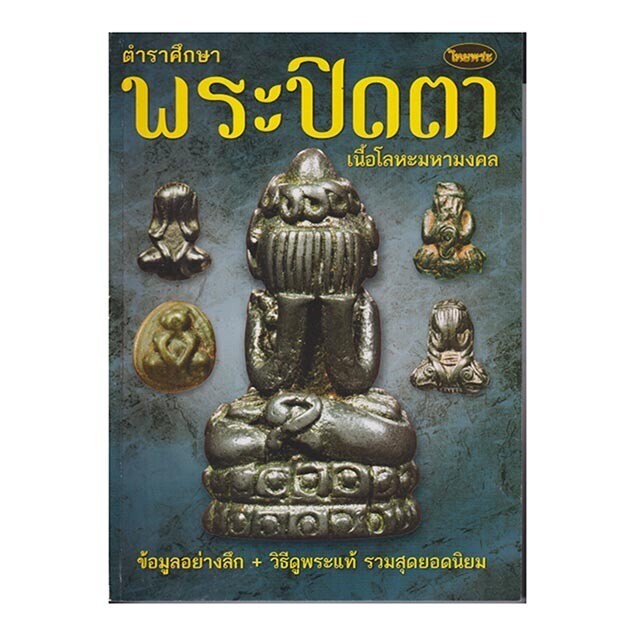
These amulets are a testament to the openness of Thai culture, embracing diversity and placing familial piety and gratitude at its core. This anthropological exploration reveals the rich history and cultural significance of Thai amulets, showcasing their timeless appeal to people from all walks of life.

So, next time you encounter one of these mystical charms, take a moment to appreciate the deep-rooted beliefs and traditions that have made them an integral part of Thai culture for generations.


